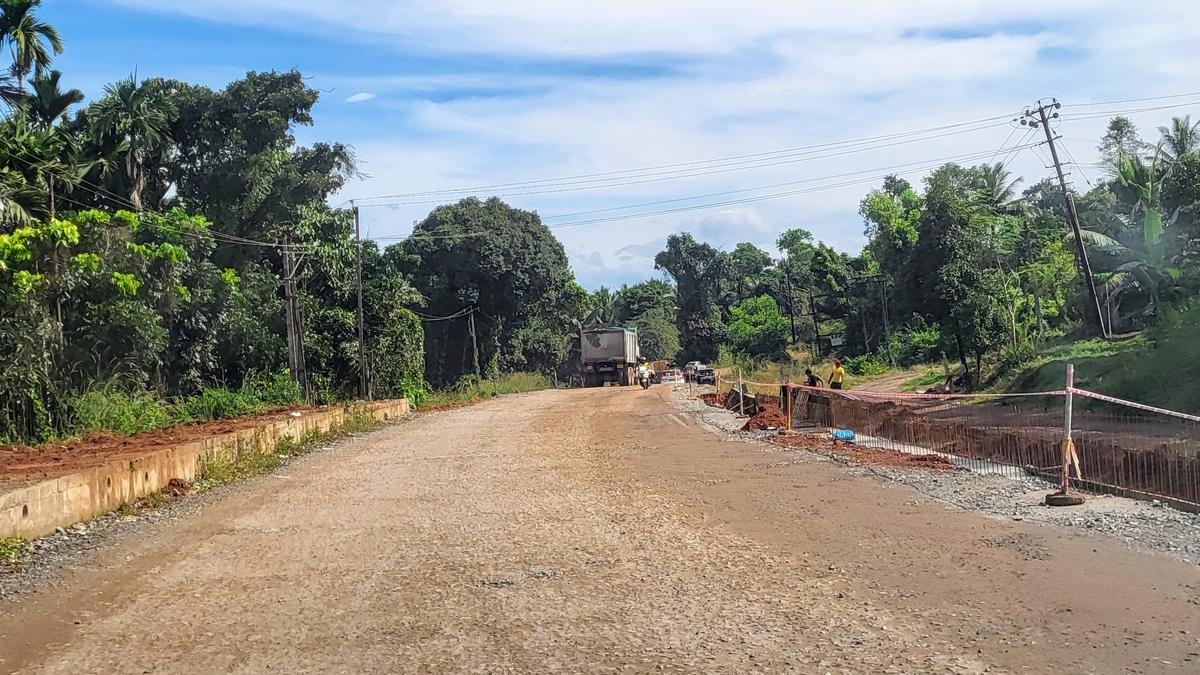
Utility of concrete box drains along Punjalakatte-Charmadi NH 73 stretch, that is being widened, questioned
The Hindu
The construction of concrete box drains along the shoulders of Mangaluru-Tumakuru National Highway 73 which is being widened to a two-lane between Punjalakatte and Charmadi, has surprised road users and engineers who have cast doubts about the utility of the box drain.
The construction of concrete box drains along the shoulders of Mangaluru-Tumakuru National Highway 73 which is being widened to a two-lane between Punjalakatte and Charmadi, has surprised road users and engineers who have cast doubts about the utility of the box drain.
With the concrete box drains protruding about 4 inches above the road surface upon completion of the work, the road width would be restricted exactly 10 m. Draining out of the rainwater from the road surface might get affected if the rainwater vents of the concrete drains at the road surface level fail to drain out water.
The National Highways Division of Karnataka Public Works Department is executing the two-lane with paved shoulder widening work for the 35 km distance at an estimated cost of ₹390 crore. The department has already widened the stretch between B.C. Road and Punjalakatte into two lanes. Concrete box drains, about 3 inches high and 2 inches wide, were being constructed as a part of the widening work all along the stretch.
Naresh Chandra, a resident of Bantwal, said while the highway widening was planned as a two-lane highway with paved shoulders, and questioned whether box drains could be considered as paved shoulders. He noted that the box drain jutting out of the road surface would restrict vehicles within the 10 m space and prevent users from exiting the highway in cases of emergencies.
He also said that box drains in rural areas made for wasteful expenditure as rainwater would anyway have drained out if shoulders were properly constructed and shoulder drains were formed. When the highway would further be widened in future, the box drain would have to be dismantled resulting in more expenditure, he said.
A retired senior engineer said the drain top should at least have been at the road level or below for easy rainwater draining. If the rainwater vents as in the present design get choked, the highway will become a swimming pool during rains, he said. The engineer also said restricting the width to 10 m with projecting drain top was not advisable.

The Karnataka government has drafted a comprehensive master plan for the integrated development of Kukke Subrahmanya temple, the State’s highest revenue-generating temple managed by the Hindu Religious Institutions and Charitable Endowments Department. The redevelopment initiative is estimated to cost around ₹254 crore and aims to enhance infrastructure and facilities for devotees.












